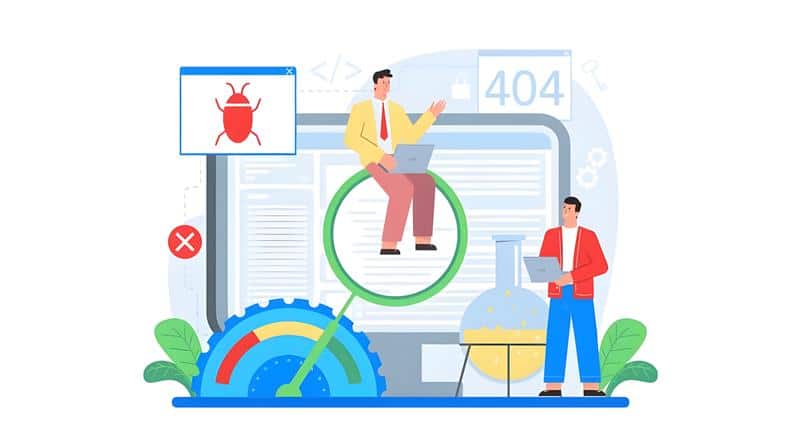The last thing you want as a business is to release a product that your customers will be unhappy about. When an application is tainted by bugs and it doesn’t function as anticipated, it can ruin the experience for all parties involved. This is why bug tracking softwareis not something that should be overlooked.
These programs make debugging a very easy and smooth process that solves all potential issues of a system or application. With the right tool, you will be in full control over the lifecycle of the bugs. But how does defect tracking software streamline debugging? Here’s everything you need to know.
What Makes Bug Tracking Software So Amazing?
Bug tracking applications have a lot of benefits for developers and testers. These include:
Quick Bug Resolution
The ability of the software to resolve bugs faster is one of the selling points. With the help of these apps, teams can find bugs and fix them more quickly.
Improved Reports
With the help of these programs, dev teams will be able to create bug trend reports, as well as reports based on a variety of other metrics.
Improved Collaboration
Teammates can collaborate more easily and efficiently with the help of bug tracking tools.
Selecting the Ideal Bug Tracking Software
If you want to see the best results, you should pick the perfect bug-tracking software for your company. Let’s take a look at several features that you should take into consideration in terms of defect tracking programs.
Interface
The user interface is one of the main things you should pay attention to. It should be as organized and easy to use as possible. When you analyze tools, make sure that the interface is easy to navigate and looks clean.
Price
You can choose a free bug tracking app, but these options are not always the best. Free software may be limited in features or may not be the best at what it does. But that doesn’t mean you have to choose an expensive alternative either – there are plenty of good apps with average costs, so you will be able to find the right one for you.
Features
Similar to test case management tool options, the features represent the most important aspect when you’re looking at bug tracking software. Ideally, the application should include all the specific features that you and your team need. Some of these features might include:
- The ability to track and manage bugs
- The option to assign certain bugs to teammates
- The ability to attack screenshots and files
- The ability to create reports
- The ability to set deadlines and priorities
Integration Capabilities
Consider the bug tracking software’s integration capabilities with other tools in your development and testing ecosystem. Seamless integration with project management tools, version control systems, and communication platforms can enhance the overall efficiency of bug resolution and collaboration within the team.
Customization Options
Look for bug tracking software that offers customization options to tailor the workflow to your team’s specific needs. The ability to create custom fields, workflows, and status categories ensures that the bug tracking process aligns seamlessly with your development methodology and project requirements.
Accessibility and Collaboration Across Teams
Evaluate the accessibility of the bug tracking software and its collaborative features, especially if your development team is distributed or works remotely. Cloud-based bug tracking solutions with real-time collaboration features can enhance communication and coordination among team members located in different geographical locations.
Scalability
Consider the scalability of the bug tracking software to ensure it can accommodate the evolving needs of your growing projects and teams. A scalable solution can adapt to an increasing volume of bugs, users, and projects without compromising performance or functionality.
Security Measures
Prioritize the security features of the bug tracking software to safeguard sensitive information related to bugs, project details, and user data. Look for features such as role-based access control, encryption, and secure authentication methods to protect your data from unauthorized access.
User Training and Support
Assess the availability of training resources and customer support provided by the bug tracking software vendor. User-friendly software with comprehensive documentation, tutorials, and responsive support can contribute to a smoother adoption process and ongoing utilization of the bug tracking tool within your team.
Mobile Compatibility
In today’s dynamic work environment, having bug tracking software with mobile compatibility is advantageous. It allows team members to access and manage bug-related information on the go, fostering flexibility and responsiveness in addressing issues, even when away from the workstation.
Historical Data and Audit Trail
Check whether the bug tracking software maintains a detailed historical data log and audit trail. This feature can be valuable for tracking changes, understanding the evolution of bugs, and conducting post-mortem analyses to enhance future development and testing processes.
Community and User Feedback
Explore the community and user feedback around the bug tracking software. User reviews, forums, and community discussions can provide insights into the real-world experiences of other teams and help you make an informed decision when selecting a bug tracking tool for your projects.
Vendor Reputation and Reliability
Consider the reputation and reliability of the bug tracking software vendor. A reputable vendor with a track record of delivering reliable and well-supported software is more likely to provide a stable and feature-rich bug tracking solution for your team.
Regular Updates and Maintenance
Opt for bug tracking software that receives regular updates and maintenance from the vendor. Continuous updates ensure that the software stays current with industry standards, security patches, and emerging trends, contributing to a more robust and effective bug tracking process.
Trial Period and Evaluation
Take advantage of any trial periods or evaluation options offered by bug tracking tool vendors. This allows your team to assess the software’s suitability, features, and overall compatibility with your workflow before committing to a long-term subscription or license.
Final Thoughts
Bug tracking software is up there with test management tool options in terms of importance. You need these products if you want to streamline the debugging process and be able to focus on more urgent tasks. Finding the perfect software is also necessary to make this happen, so don’t hesitate to spend more time looking for different options.














































